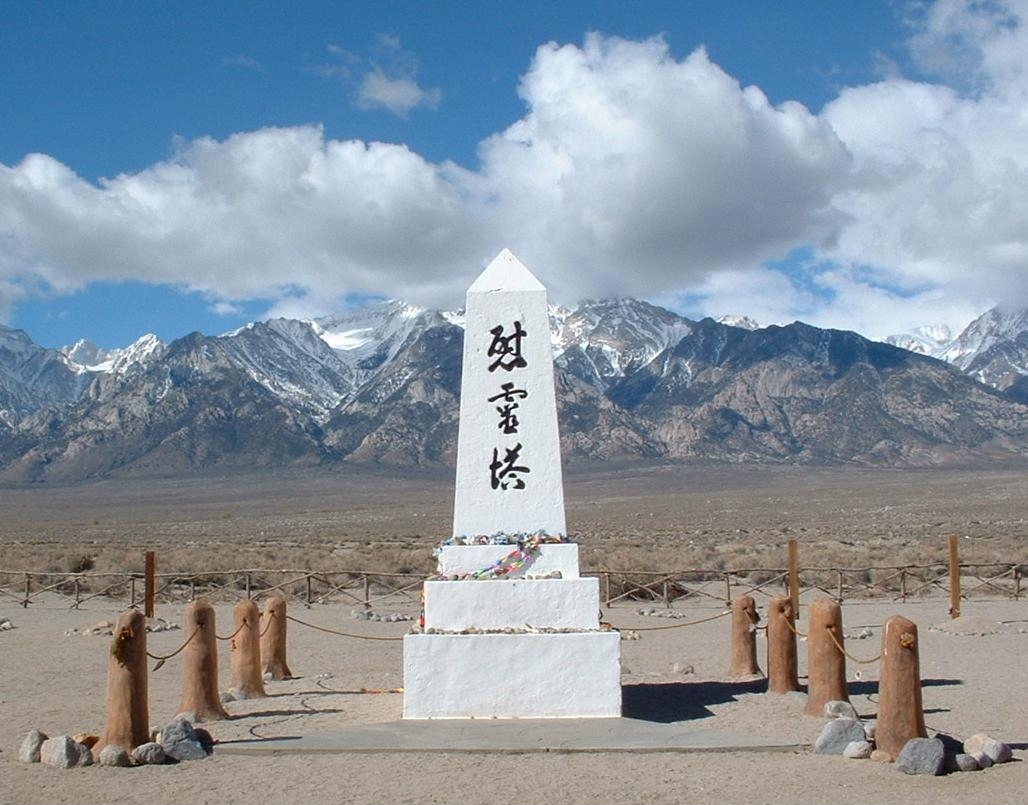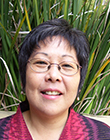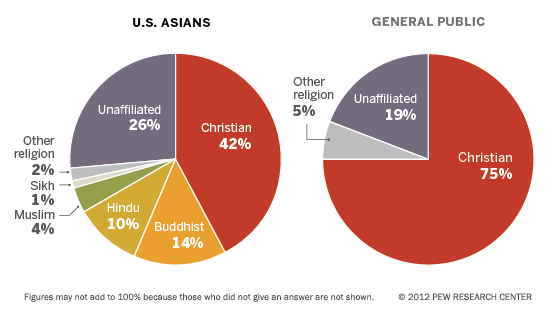Teaching and Learning through the Manzanar Pilgrimage
Pilgrimage as Pedagogy
Before studying at the Graduate Theological Union in Berkeley, I lived many years in the southern Andes of Peru, 12,000 feet above sea level in the high plains bioregion surrounding Lake Titicaca, sharing life and working with the Aymara indigenous peoples. I experienced a deep connection with the Aymara through our mutual vulnerability, solidarity, and friendship. Instead of my "otherness," they recognized and embraced me as another. I experienced what theologian Johann Baptist Metz describes as the "mysticism of open eyes": an increased readiness to see more, to name visible and invisible suffering and pay attention to it, to be moved to compassion, to "suffer with," to respond, and in so doing, to experience God's presence in suffering and hope. This expansion of love in Peru gave me new ways to see the experience of my own Japanese American history and a new heart now able to perceive the suffering and hope that was lived in the lives of my parents and grandparents through immigration, detention, to redress and beyond.
Popular religious practice among the Aymara relates profoundly with the earth, and that has helped boost their resistance and hope during centuries of colonization. Embedded with spiritual resonance through regular pilgrimages, prayer, and rituals the land holds memory. In 2004 and 2005, after learning with the Aymara, I reconnected with my own heritage by participating in the Manzanar Pilgrimage, a return to the Japanese American concentration camp. Such pilgrimages revisit shadowed ground, uncovering sacred traces of suffering and hope. The cemetery obelisk at Manzanar expresses the message, "This is the place of consolation for all of humanity." It is about reconnection with each other, with our ancestors, with mystery, and the depth of life. It is not an escape like tourism, but a return to the center of pivotal events that have marked us and to narratives implanted in the land itself. The pilgrim's journey seeks a restoration of wholeness by a recentering, reentering, and recovery of history; it is a rediscovery that we are part of a living and vital collective memory. We journey together, experiencing more together than we could alone.
In 2006 I was invited to collaborate with the Institute for Leadership Development and Study of Pacific and Asian North American Religion (PANA at the Pacific School of Religion in Berkeley, CA) and their Civil Liberty and Faith Project in teaching a course, America's Internment: Theological Pilgrimage to Manzanar, which I continued to teach for four years. In Peru, I had been exposed to popular education pedagogy with adult learners and wondered if these practices could converge in a graduate studies classroom for transformative learning. Interdisciplinary teaching also emphasized collaborative learning, shared inquiry, and sought to provide a space of engagement and promote relationality. It promotes the discovery of convergences amidst dissonance and new sources as points of departure. Engagement with spatiality as a pedagogical tool enables us to inhabit the topography of memory, not only to release the memories of pain and struggle, but also those of healing, hope, and new life.
The Phases of Pilgrimage
I expected perhaps a half-dozen Asian/Asian American seminary students to register but had to close the class at twenty students who came from very diverse ethnic backgrounds. As we moved through understanding and experiencing the four phases of the pilgrimage process, narrative connections were shared. The first phase of pilgrimage, motivation and longing, revealed a widespread woundedness: local Californians heard stories from their parents, friends, and neighbors being taken away or simply disappearing from their classrooms. Those from the Midwest and East Coast felt haunted by this dissonant history that is not taught in schools, as if it only affected the West Coast or never really happened. The commitment to journey together to shadowed ground was shared in the longing to reclaim lost parts of ourselves, to reconnect, and to reconcile. What I had limited to being a Japanese American story was revealing itself as an American story which has meaning for wider circles of communities and generations. We reenter into the chaos of suffering and its lack of interpretability precisely in order to give voice to both the suffering and that which made the suffering bearable, resisting the challenge of emotional meaningless.
To provide context for the journey, during the second pilgrimage phase of preparation and departure, we studied significant facts of Japanese American history such as Executive Order 9066, Civilian Exclusion Orders, and the "evacuation" of 120,000 people initially to assembly centers to await completion of ten "relocation centers" (concentration camps) in remote areas of the country. I refer to the recommended reading for further information since space is limited in this article. We were fortunate to have living survivors who were able to share their experiences, and we collaborated with two local historical Japanese American churches, Buena Vista Methodist Church in Alameda, CA, and Sycamore Church in Albany, CA. In sharing their stories and with respectful listening, healing and new learning happened for the survivors and the students. The commitment to journey to Manzanar and understand what happened continues to release that which has been shrouded in silence for many years, and, paradoxically, brings new wholeness in knowing the entire story. The survivors would bless and thank us for the journey we would be making. In many ways, the immersion and experiential aspects of the course began before the actual physical journey to Manzanar.
Preparation also involved spiritual practices that freed us to temporarily suspend status or social markers in order to be able to cross a threshold and enter into liminal space and time. Silence with simple embodied gestures was developed: listening, remembering, mourning, honoring, and sharing. These were invoked and practiced together at different moments during the course: in response to the survivors’ stories, during classroom sharings, at different places at Manzanar such as the gardens, the latrines, mess hall locations, the children’s village or orphanage, or the obelisk at the cemetery during a dawn prayer. Theological preparation provided a means to reflect on suffering, mourning, memory, and hope; the losses endured that cannot be recovered require the ability to mourn rather than be forgotten, compromised, or sacralized. The memory of suffering grounds hope as it counteracts nostalgia and historical triumphalism, which causes forgetfulness or opacity. Metz writes “resurrection mediated by way of the memory of suffering means: the dead, those already vanquished and forgotten, have a meaning which is yet unrealized" (1972).
The Journey
The third phase is the journey itself, which, in a practical sense, meant an eight-hour bus trip through the Central Valley, across the Mojave and up the eastern side of the Sierras to arrive at the Manzanar National Historic Site, now maintained by the National Park Service. We made the journey with heightened senses (sight, sound, taste, touch, scent) and our ability to perceive. We journeyed to a "thin place" where the boundaries are more porous and permeable between the visible world of our ordinary experience and the encompassing Spirit-Sacred-God that is present everywhere, though we often do not perceive it. “Thin places” is a metaphor that concerns anywhere our hearts are opened.  Dusk and dawn, mountains and high places, music, poetry, literature, the visual, and theater arts are some of the many kinds of thin places. Certain people are thin places where we experience the spirit's presence. Serious illness, suffering, and grief have the potential to become thin places when our hearts are broken open by such experiences rather than closed down. Yet how do we rise with our hearts that feel simply broken from something such as the historical injury of internment? How do we collectively enable, empower each other, and journey together to name the wound, mourn well, in order to live into the process of transformation?
Dusk and dawn, mountains and high places, music, poetry, literature, the visual, and theater arts are some of the many kinds of thin places. Certain people are thin places where we experience the spirit's presence. Serious illness, suffering, and grief have the potential to become thin places when our hearts are broken open by such experiences rather than closed down. Yet how do we rise with our hearts that feel simply broken from something such as the historical injury of internment? How do we collectively enable, empower each other, and journey together to name the wound, mourn well, in order to live into the process of transformation?
This is what we were learning, discovering, and experiencing together. We joined over 700 other pilgrims converging during the last weekend of April for the annual Manzanar Pilgrimage. The weekend involves a program of historical awareness, making the connections to be vigilant today for similar situations, and an interreligious ceremony (Buddhist, Christian, Shinto, Muslim) to honor the dead that evoked layers of meaning, collective memory, healing, and ongoing commitment for reconciliation, justice, and compassion. It is a journey that frees the pilgrim from all that prevents heart-unity with others, where we experience communitas. There, in the hot desert sun by the cemetery obelisk, with Mt. Williamson standing in the background, we gathered to remember, to mourn, to listen, to pray, to dance with hope and gratitude for the imprints of compassion on our hearts. We literally encountered imprints of hope in the stone and waterfall gardens created by the internees for the contemplation of restorative beauty amidst the unjust desert incarceration—the unfailing stream of integrity, the flowing waters towards justice. Imprints of hope: birdsong on barbed wire. Dawn and dusk at Manzanar, communion with the living and the dead. Echoes of children’s voices, both past and present. Youth reaching out across the barbed wire realities of today. Elders and ancestors passing on wisdom and strength for the journey.
Return and Promise
The fourth phase is the return and promise, and it is a challenging time. We are changed by the experience and come away with new wisdom and awareness, moved to prayer and action. What do we bring back to the community? How do we fulfill a promise of social responsibility that was inspired on the journey? A Filipina student broke through the enmity of war by connecting the suffering of her people at the hands of the Japanese military with the suffering of Japanese Americans during WWII. Many participants discovered friends and relatives who had been detained at Manzanar on the wall cloth of names, and confirmed by a cellphone call, that yes, your uncle was there, but we just never talked about it. Solidarity with the Arab American community in the aftermath of 9/11 deepens as parallel connections are made, revealing the similar pattern of targeting those who look like the enemy. Final “projects of promise” included homilies, radio interviews of church members who came forward with their stories of internment, prayer services with images from the pilgrimage, solidarity projects with undocumented immigrants, research papers concerning the spirituality of social movements, the connection with the United Farmworkers’ Pilgrimage from Delano to Sacramento, Native American layers at Manzanar, reflections on “church on the bus” and intercultural faith communities, lesson plans on the Manzanar Experience, and for many, an ongoing commitment to participate in the annual Manzanar Pilgrimage and search out other sacred places of our lived experience. In conclusion, I share this poem by one of the students at the time, Michael Sepidoza Campos, PhD (used with permission):
But life persists. Is relentless.
Where terrain, though desolate
Channel a people’s spirit to hope deeply.
To see beneath the veneer of discomfort
To claim life upon a land that has both
Spat and embraced them.
There is stunning hope here.
There is gratitude from which we draw life.
We encounter the voices of our common ancestors
May we learn to see with their eyes
Hear with their ears
Touch with their hearts
And so hope as deeply
We remember
And we are blessed again and over again.
 Joanne Doi, MM, PhD, is currently in Chicago, IL as codirector of the Maryknoll Sisters Integration Program for new members. She taught at the Franciscan School of Theology in Berkeley, CA as assistant professor of intercultural theologies and ministries and previously served in Peru among the Aymara people.
Joanne Doi, MM, PhD, is currently in Chicago, IL as codirector of the Maryknoll Sisters Integration Program for new members. She taught at the Franciscan School of Theology in Berkeley, CA as assistant professor of intercultural theologies and ministries and previously served in Peru among the Aymara people.

